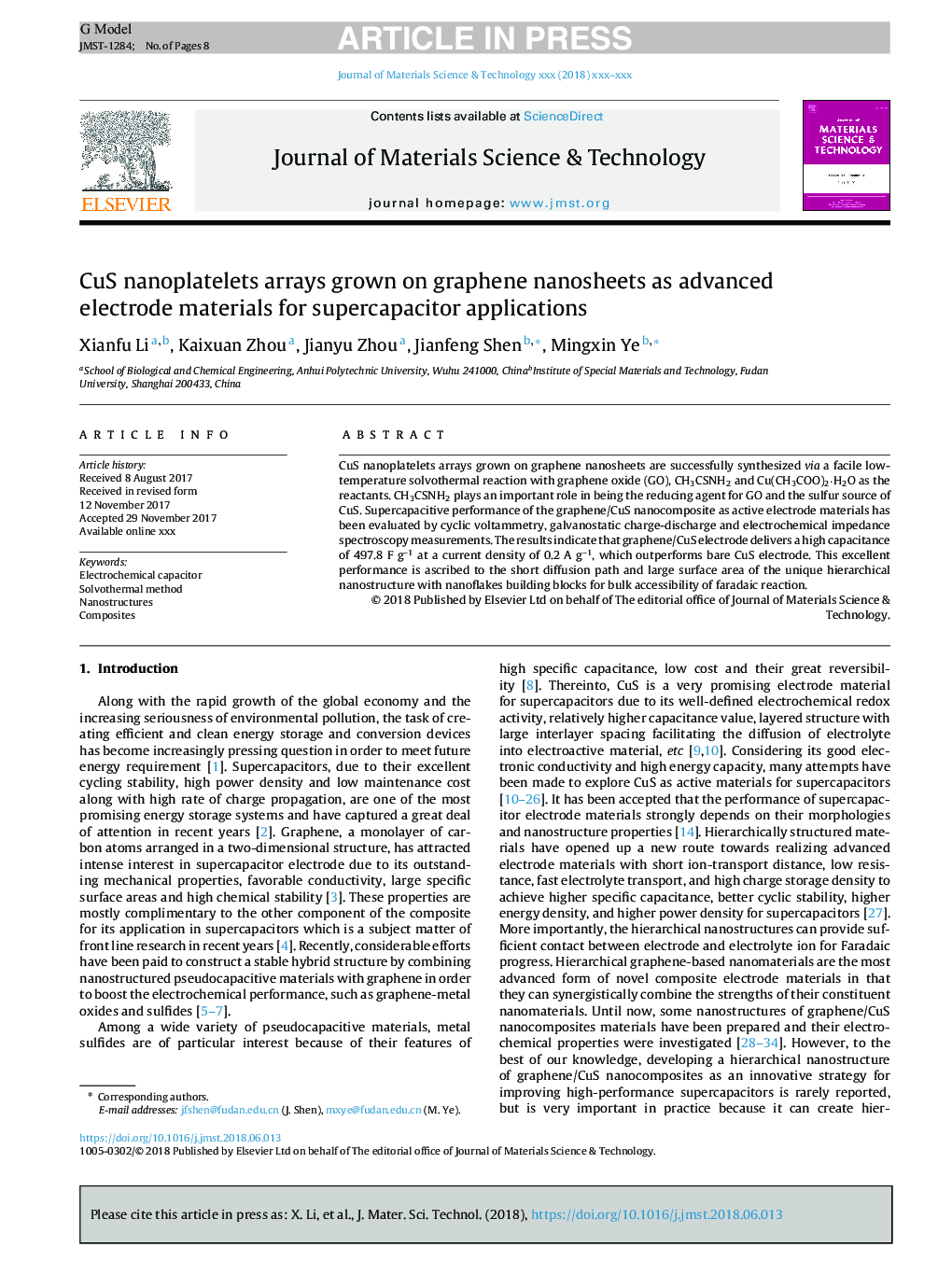| Article ID | Journal | Published Year | Pages | File Type |
|---|---|---|---|---|
| 8955402 | Journal of Materials Science & Technology | 2018 | 8 Pages |
Abstract
CuS nanoplatelets arrays grown on graphene nanosheets are successfully synthesized via a facile low-temperature solvothermal reaction with graphene oxide (GO), CH3CSNH2 and Cu(CH3COO)2·H2O as the reactants. CH3CSNH2 plays an important role in being the reducing agent for GO and the sulfur source of CuS. Supercapacitive performance of the graphene/CuS nanocomposite as active electrode materials has been evaluated by cyclic voltammetry, galvanostatic charge-discharge and electrochemical impedance spectroscopy measurements. The results indicate that graphene/CuS electrode delivers a high capacitance of 497.8 F g-1 at a current density of 0.2 A g-1, which outperforms bare CuS electrode. This excellent performance is ascribed to the short diffusion path and large surface area of the unique hierarchical nanostructure with nanoflakes building blocks for bulk accessibility of faradaic reaction.
Related Topics
Physical Sciences and Engineering
Materials Science
Materials Chemistry
Authors
Xianfu Li, Kaixuan Zhou, Jianyu Zhou, Jianfeng Shen, Mingxin Ye,
